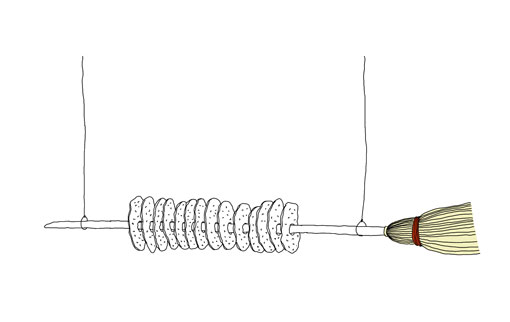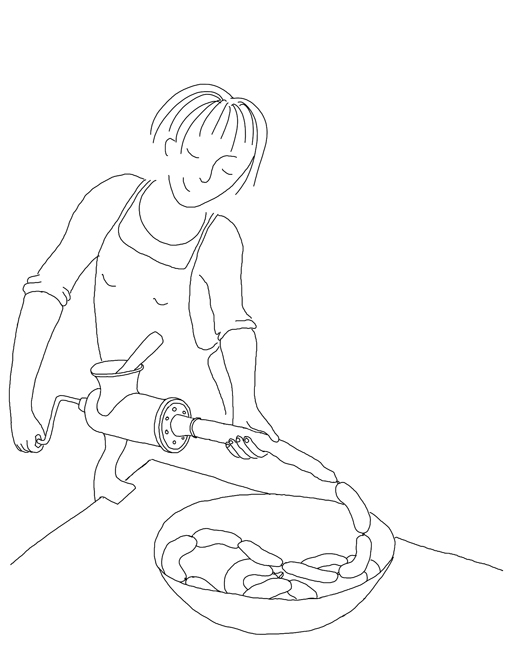
In our summerhouse garden we eat breakfast on a hill of poppies. Unfortunately I can’t use these poppies to top this rich and flourless chocolate cake…
¼ lb (115 g) dark unsweetened chocolate
3 oz (90 gram) butter
1 cup (250 ml) sucanat
½ cup (125 ml) almonds, ground or finely chopped
3 eggs
1-2 tablespoons brandy or rum
poppy seeds, for the topping (optional)
Start by grinding the almonds. Melt the chocolate on low heat in a double boiler (I don’t have one myself so I use a stainless steel bowl on top of a saucepan of water) on low heat and stir occasionally. When the chocolate is melted add the butter, sugar and brandy. Stir over low heat. When the butter is almost melted add the almonds and stir until mixture is well blended. Turn off the heat and set aside. Crack the eggs and separate the yolks from the whites. Start to beat the egg yolks well before stirring them into the chocolate mixture. Whip the whites stiff and fold them lightly into the rich chocolate. Butter a 7-8 inches (18-20 cm) tart tin with a removable base or any cake dish you would prefer to serve it in. Spread the mixture and sprinkle a single layer of poppy seeds on top (this will give a slightly flavored crust on the top of the cake).
Bake the cake in the oven for about 25-30 minutes @ 290ºF (140ºC). It should be a little sticky when its done. Let the cake cool and serve it with whipped cream. This cake can easily be made a day before serving.
I will serve this cake for my Swedish midsummer celebration with fresh strawberries and bubbly wine. It will of course happen on top of my poppy seed hill. Happy midsummer!
This recipe is based on Elizabeth David’s chocolate cake, Gâteau Au Chocolat et aux Amanes from the book French Provincial Cooking. Elizabeth didn’t use poppy seeds and flavored her cake with both coffee and brandy.







